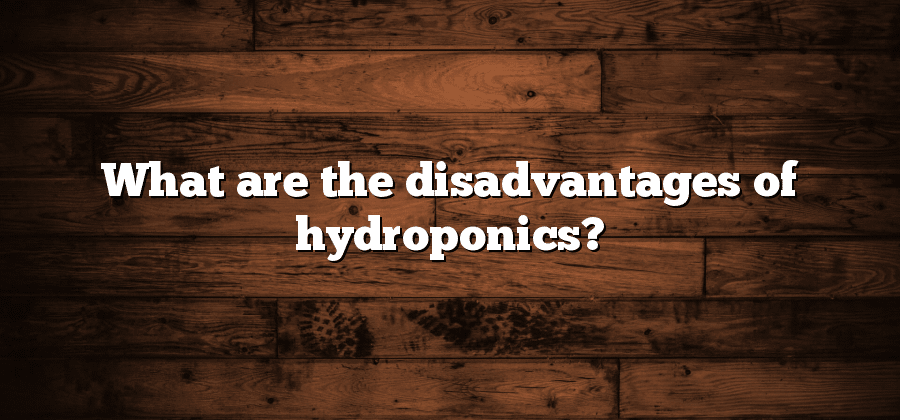High initial setup costs
Setting up a high-quality agricultural system requires a significant initial investment. From purchasing the necessary equipment to securing suitable land, the costs can quickly add up. Additionally, the installation of essential infrastructure, such as irrigation systems and climate control units, can further contribute to the high setup costs. While these initial expenses may seem daunting, it is important to consider the potential long-term benefits, such as increased productivity and higher crop yields.
Furthermore, the selection and procurement of premium quality seeds, along with the establishment of appropriate growing mediums, also contribute to the initial setup costs. Investing in top-notch seeds and ensuring optimal growing conditions can significantly enhance the overall performance and resilience of the agricultural system. However, these expenses should be carefully weighed against other factors, such as market demand and profitability. Despite the high initial setup costs, adopting advanced technologies and efficient cultivation practices can lead to sustained success and profitability in the long run.
Requires continuous monitoring and maintenance
Proper monitoring and regular maintenance are essential when it comes to managing any agricultural system. This holds true for indoor hydroponic systems as well. In order to ensure optimal plant growth and yield, constant vigilance is required. This includes monitoring the nutrient solution levels, pH levels, water temperature, and overall system functionality.
Regular monitoring allows growers to identify and address any issues or potential problems in a timely manner. For instance, if the nutrient levels are not properly balanced, it can lead to nutrient deficiencies or imbalances, which can negatively impact plant growth. By keeping a close eye on the system, growers can promptly adjust and fine-tune the nutrient solution to maintain the ideal conditions for their crops.
Maintenance is equally important in hydroponic systems. This involves cleaning and sanitizing the system, replacing any worn-out or damaged parts, and ensuring that the equipment is functioning properly. Regular maintenance helps prevent any potential problems such as clogged pipes or malfunctioning pumps, which can disrupt the flow of water and nutrients to the plants. By diligently maintaining the system, growers can avoid any unnecessary setbacks and keep their crops thriving.
Susceptible to power outages
One of the challenges associated with this farming method is its susceptibility to power outages. With hydroponic systems relying heavily on electrical power to operate various components such as pumps, lights, and ventilation systems, any disruption in the power supply can have detrimental effects on the crops. Without electricity, the pumps cannot circulate water, nutrients cannot be delivered to the plants, and the lighting necessary for photosynthesis is lost. This not only halts the growth of the crops but also increases the risk of plant diseases and even crop death. Farmers using hydroponics must be prepared for potential power outages and have backup power sources or contingency plans in place to mitigate the impact on their crops.
In addition to the logistical complications, power outages in hydroponic systems can also have financial implications. When the power goes out, critical growth parameters such as lighting intensity and temperature cannot be maintained, leading to stunted growth or even crop loss. This results in a significant economic setback for the farmer, as the investment in the initial setup, maintenance costs, and ongoing operation expenses may go to waste. The risk of power outages adds another layer of complexity to an already intricate farming method, requiring farmers to invest in backup power solutions and stay vigilant in ensuring a stable power supply for their hydroponic systems.
Limited crop variety
One of the key challenges associated with hydroponic systems is the limited variety of crops that can be effectively grown. While hydroponics allows for the cultivation of a wide range of plants, certain crop types may not thrive in this environment. This is primarily due to the specific conditions required by different plants for optimal growth and development.
The limited crop variety in hydroponics can be attributed to several factors. Firstly, certain plants have extensive root systems that may not be suitable for the smaller, confined spaces provided by hydroponic systems. Additionally, some plants may require specific soil types or conditions that cannot be replicated in a hydroponic setup. This can significantly restrict the variety of crops that can be grown, making it challenging for farmers and limiting the potential profitability of hydroponic farming ventures. Despite these limitations, ongoing research is being conducted to discover innovative methods to expand the range of crops that can be successfully cultivated through hydroponics.
Risk of nutrient imbalances and deficiencies
Paragraph 1:
Proper nutrition is essential for the healthy growth and development of crops. However, one of the challenges faced in indoor farming systems is the risk of nutrient imbalances and deficiencies. With limited access to environmental factors like sunlight and natural soil composition, it becomes crucial to carefully monitor and adjust nutrient levels to ensure optimal crop health.
Paragraph 2:
Maintaining a balance of essential nutrients such as nitrogen, phosphorus, and potassium can be a delicate task in indoor farming. Without the natural buffer that soil provides, the farmer must rely on precise nutrient solutions and regular monitoring. Even with advanced technology and sophisticated systems, the risk of nutrient imbalances and deficiencies still remains a constant concern that requires unwavering attention throughout the growth cycle of the crops.






